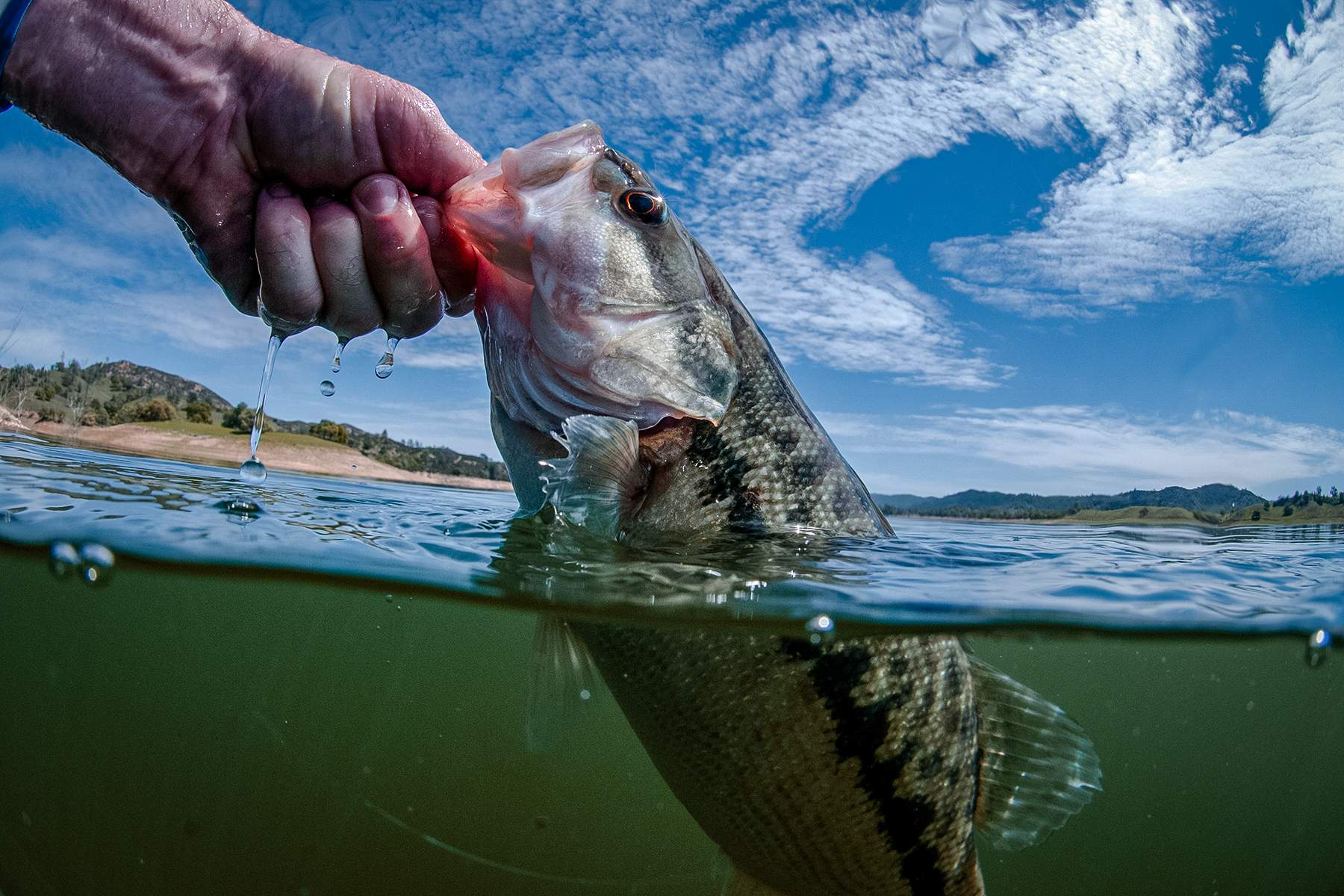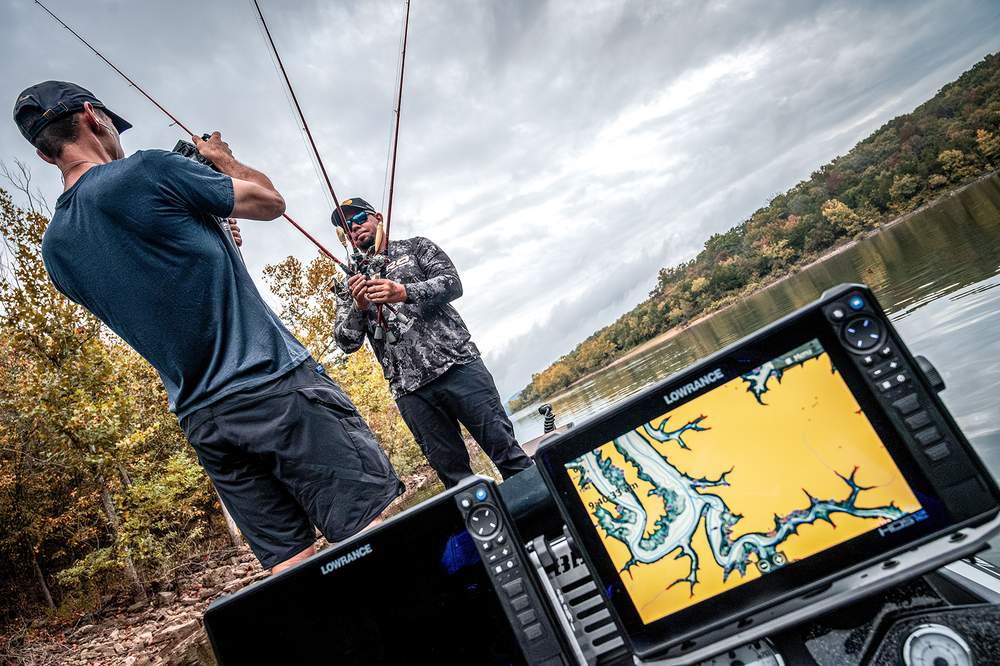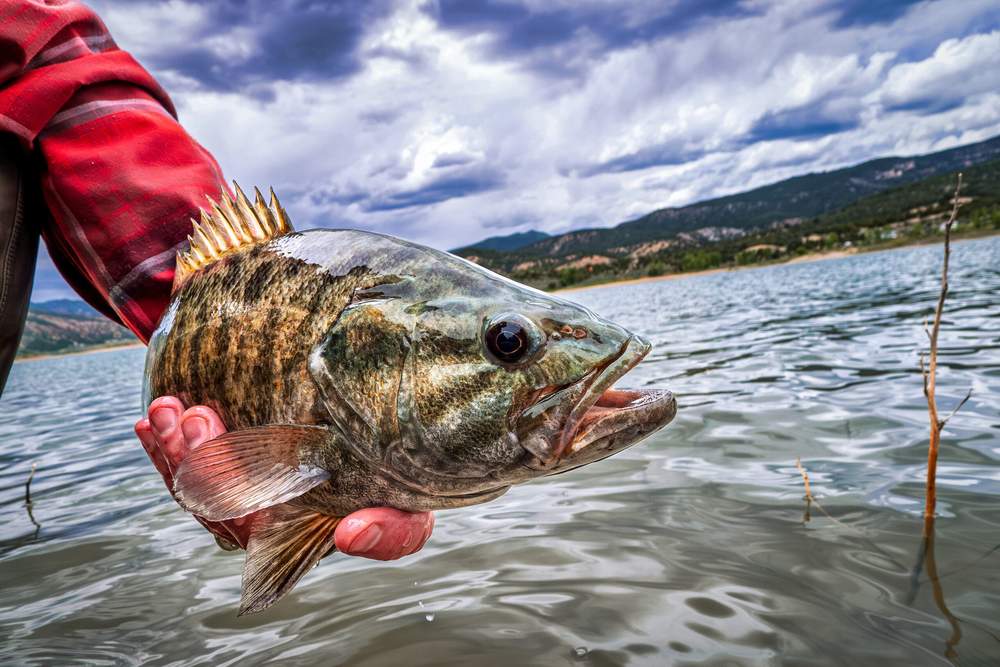Bass fishing in the U.S. isn’t limited to just largemouth and smallmouth. Across the country, there’s a surprising range of freshwater bass species: some well-known, others only found in a handful of rivers. Each has its own habitat, behavior, and following. If you spend any amount of time on the water, knowing the difference can make you a better angler and give you a deeper appreciation for what’s swimming beneath the surface.
Largemouth Bass
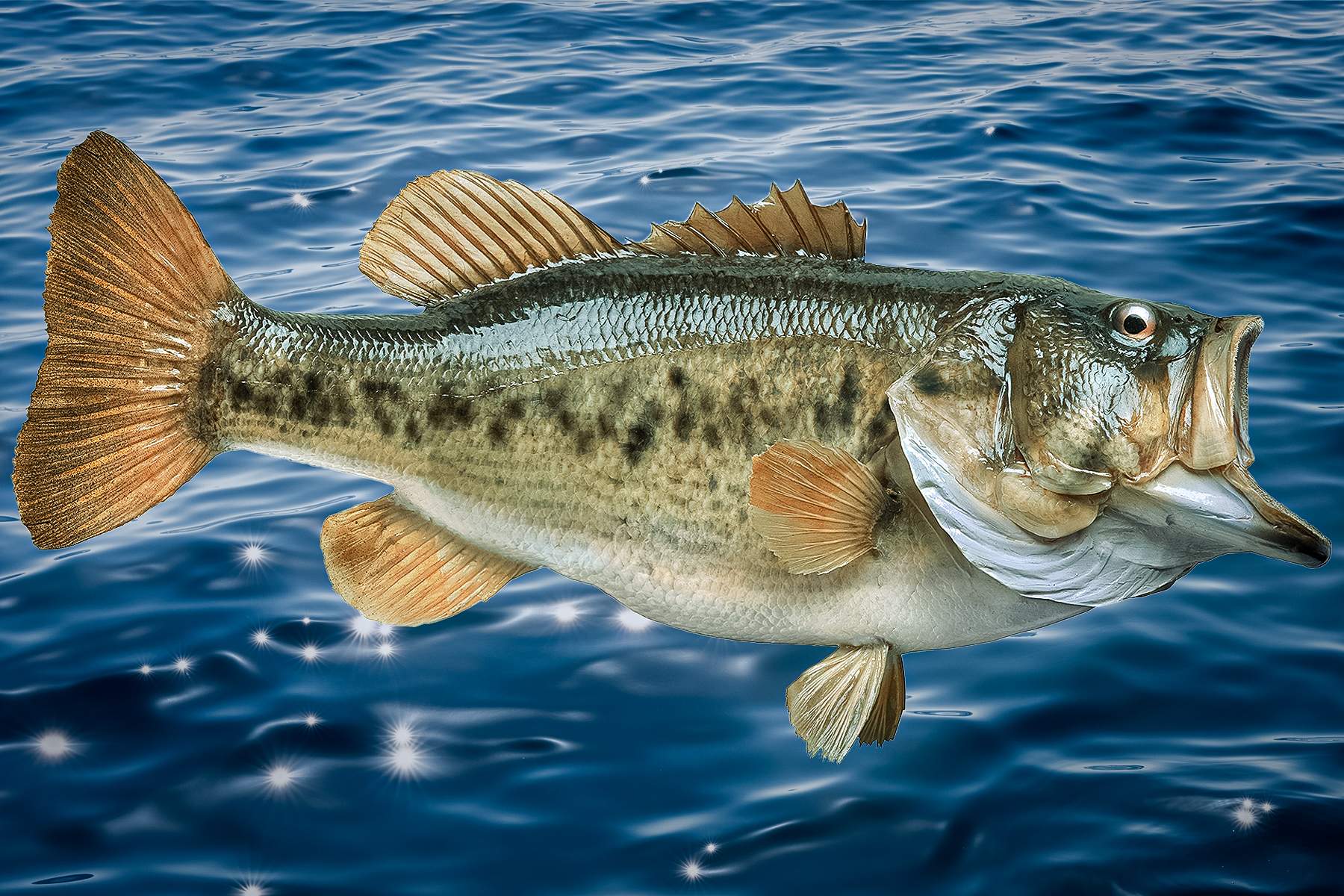
The largemouth bass is the most recognized and widely targeted freshwater game fish in the U.S. Known for its aggressive strikes and powerful runs, it thrives in warm, weedy lakes, ponds, and slow-moving rivers. Whether you’re a beginner or a tournament angler, chances are this is the fish that first got you hooked.
Habitat Preference:
Largemouth bass prefer warm, slow-moving or still freshwater with plenty of cover and structure, such as weed beds, submerged logs, docks, and rocks which they use for ambush hunting.

Feeding Behavior:
They are opportunistic predators and typically feed most actively during early morning and late evening. Common prey includes minnows, shad, frogs, crayfish, and even small birds or mice.
Seasonal Patterns:
In spring (especially during the spawn), bass move into shallow waters, making them more accessible. During summer and winter, they often retreat to deeper or cooler waters, requiring different tactics.
WORLD RECORD LARGEMOUTH BASS:
A 22-pound, 4-ounce monster caught by George Perry on June 2, 1932 on Motgomery Lake in Georgia is the current world record largemouth bass.
Smallmouth Bass
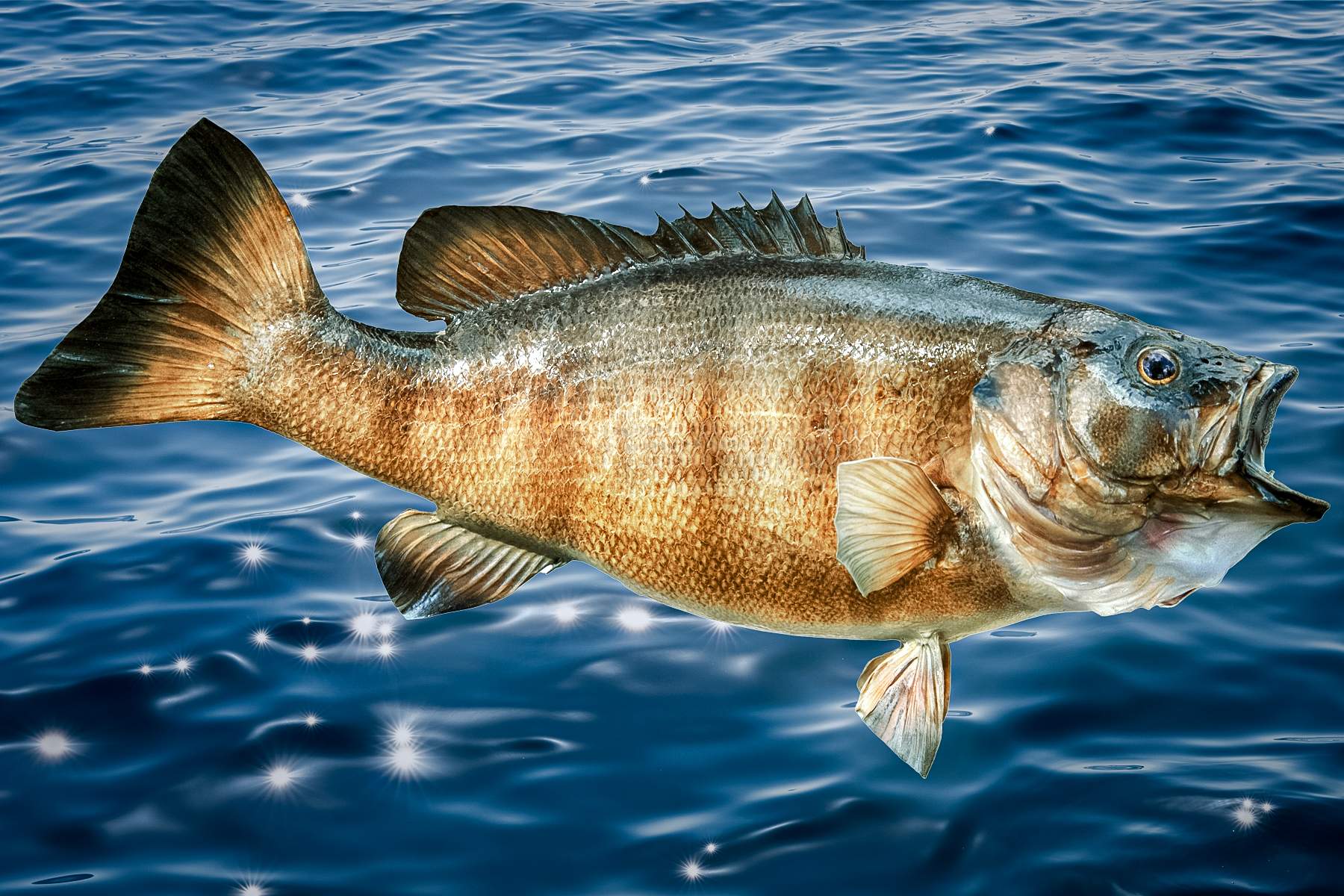
Smallmouth bass are prized for their strong, aggressive fights, often leaping out of the water when hooked. They thrive in clear, rocky rivers and lakes with cooler temperatures, especially throughout the Midwest and Appalachian regions. Smaller than largemouth, they make up for it with speed, stamina, and a stubborn streak.
Habitat Preference:
Smallmouth bass thrive in cooler, clearer waters than largemouth, often found in rivers, rocky lakes, and areas with gravel bottoms, current, and minimal vegetation.
Feeding Behavior:
They are aggressive feeders with a diet that includes crayfish, minnows, insects, and small fish. They’re known for chasing fast-moving baits and are especially active in flowing water.
Seasonal Patterns:
In spring, they spawn in shallow rocky areas, making them more visible and catchable. In summer and fall, they move deeper or into faster currents, while in winter they become sluggish and hold deep.
WORLD RECORD SMALLMOUTH BASS:
David Hayes caught an 11-pound, 15-ounce smallmouth on July 9, 1955 on Dale Hollow Reservoir in Tennessee. It held the all-tackle world record for decades, lost it for a while, and then Hayes' fish was reinstated by the IGFA as the world record smallmouth bass.
Spotted Bass
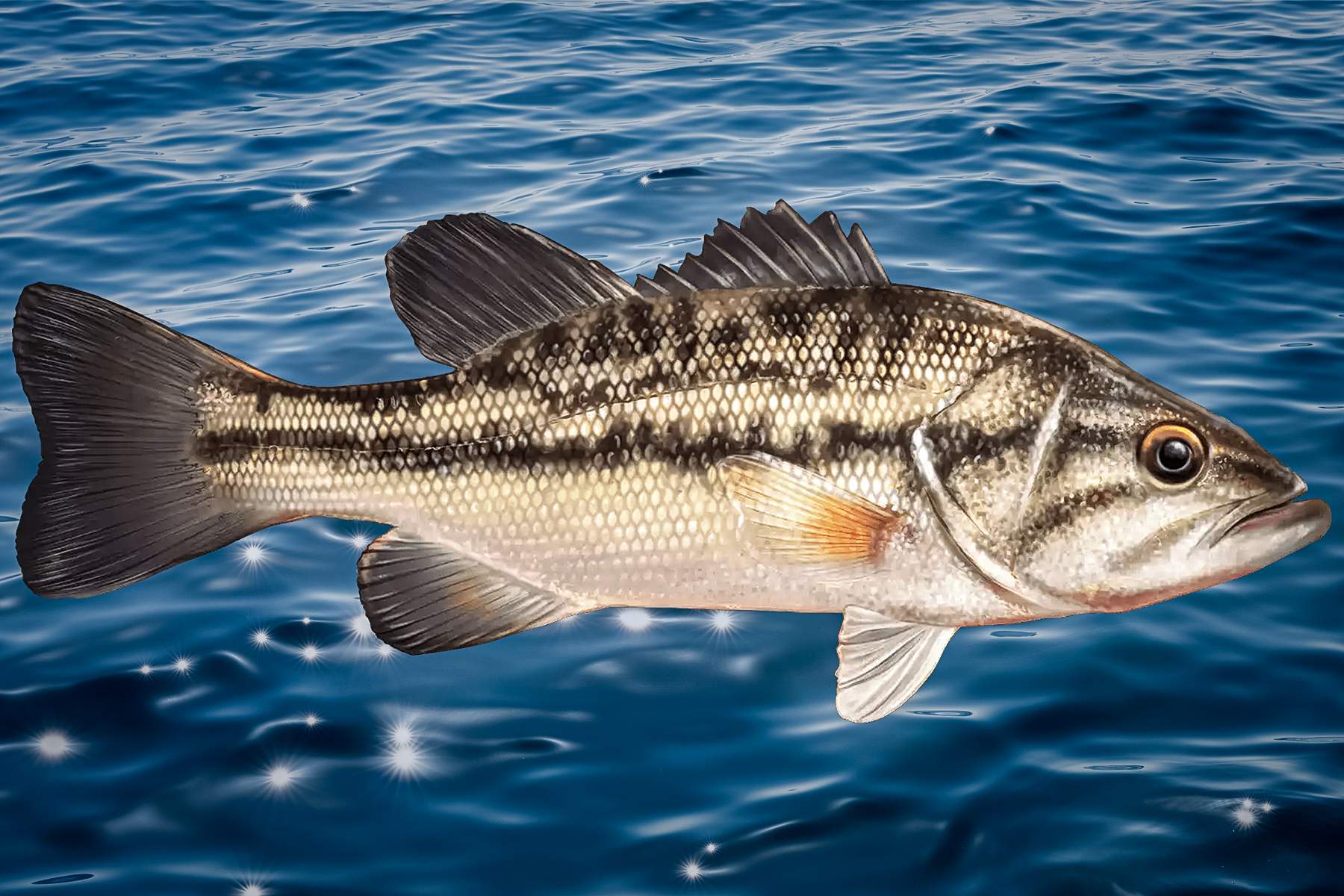
The spotted bass, often confused with the largemouth, is a sleek, aggressive predator that thrives in reservoirs and deeper, clearer lakes. It’s slimmer, with distinct rows of dark spots along its belly and a tail that doesn’t quite fan out like its cousins. This bass species strikes hard, runs deep, and is a favorite of those fishing in the South.
Habitat Preference:
Spotted bass prefer clear waters with rocky or gravel bottoms and some current. They often hold tighter to structure (like submerged timber, ledges, or drop-offs) than largemouth.
Feeding Behavior:
Spotted bass are aggressive and often school together to chase baitfish like shad and herring. They feed actively throughout the day, especially in open water and around offshore structure.
Seasonal Patterns:
In spring, spotted bass spawn in gravel beds in relatively shallow water. During summer and fall, they often move deeper than largemouth or smallmouth, staying suspended or near ledges and humps.
World Record Spotted Bass:
The current world record spotted bass is an 11-pound, 4-ounce specimen caught by Nick Dulleck on the New Bullards Bar Reservoir on Feb. 12, 2017.
Shoal Bass

Although a rarer species, shoal bass can be found primarily in Georgia’s Flint River system. They favor rocky shoals and fast water, giving them an almost smallmouth-like behavior but with their own distinct look consisting of dark tiger stripes and a green-bronze sheen. Conservation efforts are helping bring this beauty back from decline, and anglers lucky enough to land one know they’ve hooked something special.
Habitat Preference:
Shoal bass are native to the southeastern U.S. and thrive in shallow, flowing rivers with rocky shoals — as their name suggests — swift currents, and clean gravel or bedrock bottoms. They avoid still water and are rarely found in lakes.
Feeding Behavior:
Shoal bass are opportunistic predators, feeding on crayfish, minnows, insects, and small fish. They’re ambush hunters and often strike in or near current breaks, rocks, or eddies.
Seasonal Patterns:
Shoal bass spawn in late spring when water temps reach the mid-60s. They're most active in spring and fall, with summer fishing being productive in deeper pools or near fast-moving shoals.
World Record Shoal Bass:
The world record shoal bass, weighing 8 pounds, 12 ounces, was caught by Carl Davis on Oct. 23, 1977 on the Apalachicola River in Florida.
Redeye Bass
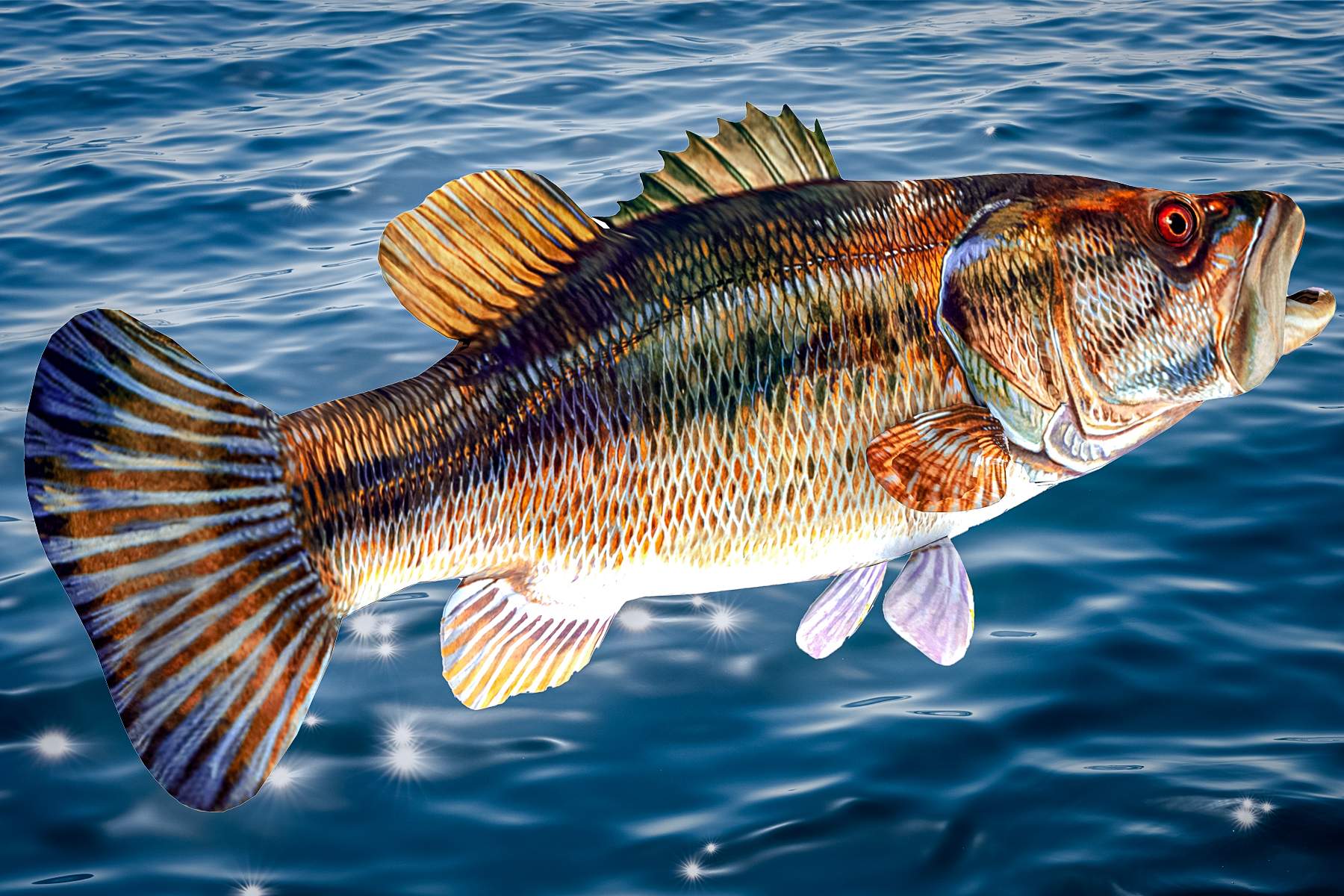
The redeye bass, a group of several subspecies, can be found swimming in the mountain streams of Alabama and Georgia. True to its name, its piercing eyes flash crimson in the light. These fish are small, no more than a pound or two at most, but are treasured by the adventurous who hike through deep hollows just to find them.
Habitat Preference:
Redeye bass prefer rocky, fast-moving water with plenty of cover like boulders and submerged timber.
Feeding Behavior:
These bass feed on insects, crayfish, minnows, and small fish. They’re opportunistic but cautious, often feeding near the surface in shaded pools, riffles, or around current breaks.
Seasonal Patterns:
Redeye bass spawn in spring when water temperatures hit the low 60s. They stay active throughout the warmer months, especially in shaded or oxygen-rich areas. In cooler seasons, they move to deeper, slower pools.
World Record Redeye Bass:
The most likely current world record redeye bass is a 5-pound, 2.5-ounce fish caught by Randy Dixon on April 4, 2001 on Lake Jocassee in South Carolina.
Suwannee Bass
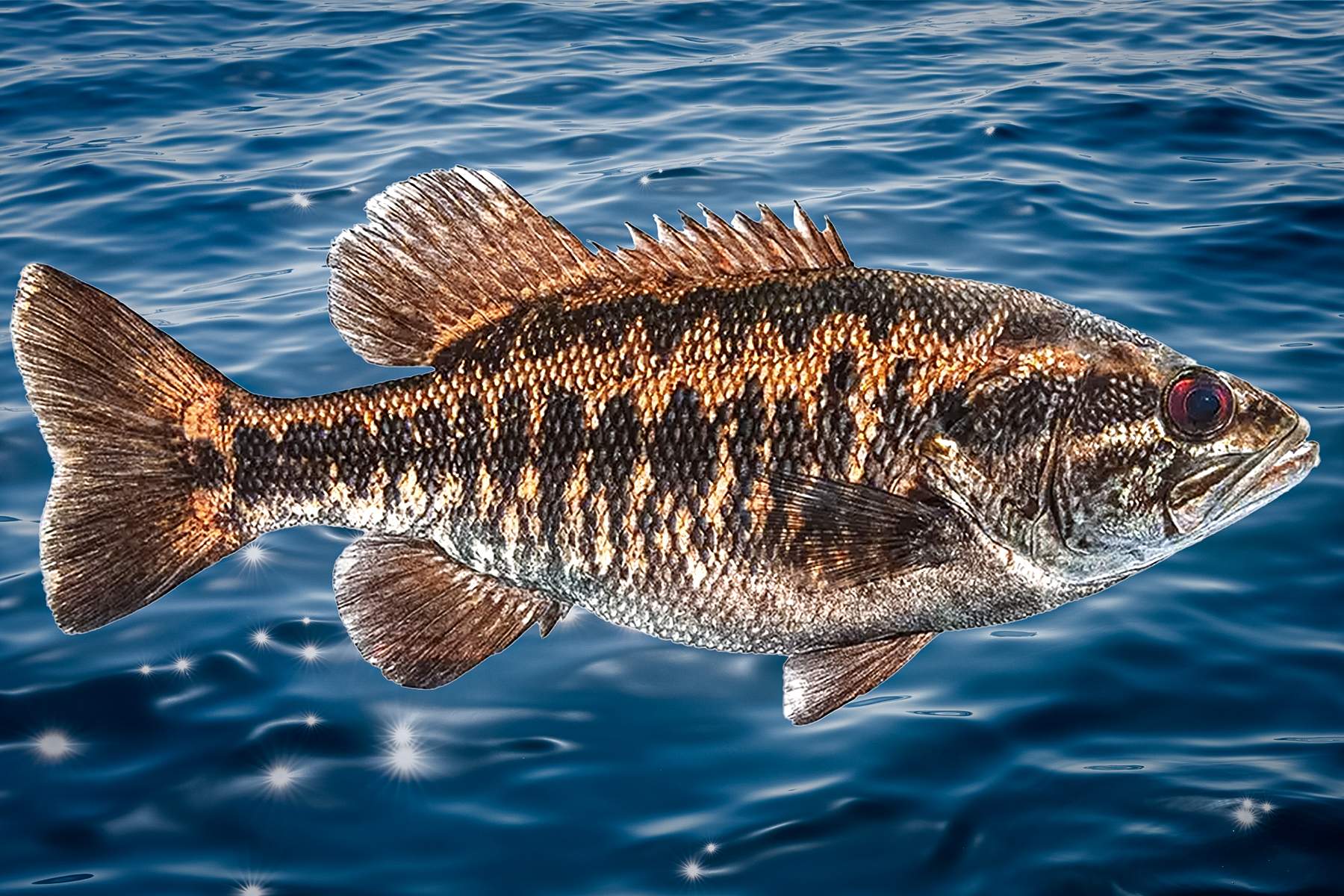
Southward, you’ll find the Suwannee bass, named after the Florida River, where it lives almost exclusively. Small, dark, and spunky, this bass prefers tannin-stained water and submerged logs. It's not a trophy fish in size, but its rarity and explosive strikes make it a badge of honor for those lucky enough to catch one.
Habitat Preference:
Suwannee bass are native to the Suwannee and Santa Fe River systems in northern Florida and southern Georgia. They thrive in clear, spring-fed rivers with limestone, rocky substrates, moderate flow, and abundant vegetation or woody cover.
Feeding Behavior:
Suwannee bass are aggressive feeders, preying on crayfish, aquatic insects, and small fish. They're most active in or near current breaks, undercut banks, and rocky ledges where prey is funneled to them.
Seasonal Patterns:
They spawn in spring when water temperatures rise to around 60–68 degrees. During warmer months, they remain active and can be caught in riffles, near rocks, or around woody structure in the main river channel.
World Record Suwannee Bass:
The current world-record Suwannee bass, weighing 3 pounds, 14 ounces, was caught by Ronnie Everett in 1985 from the Suwannee River in Gilchrist County.
Guadalupe Bass
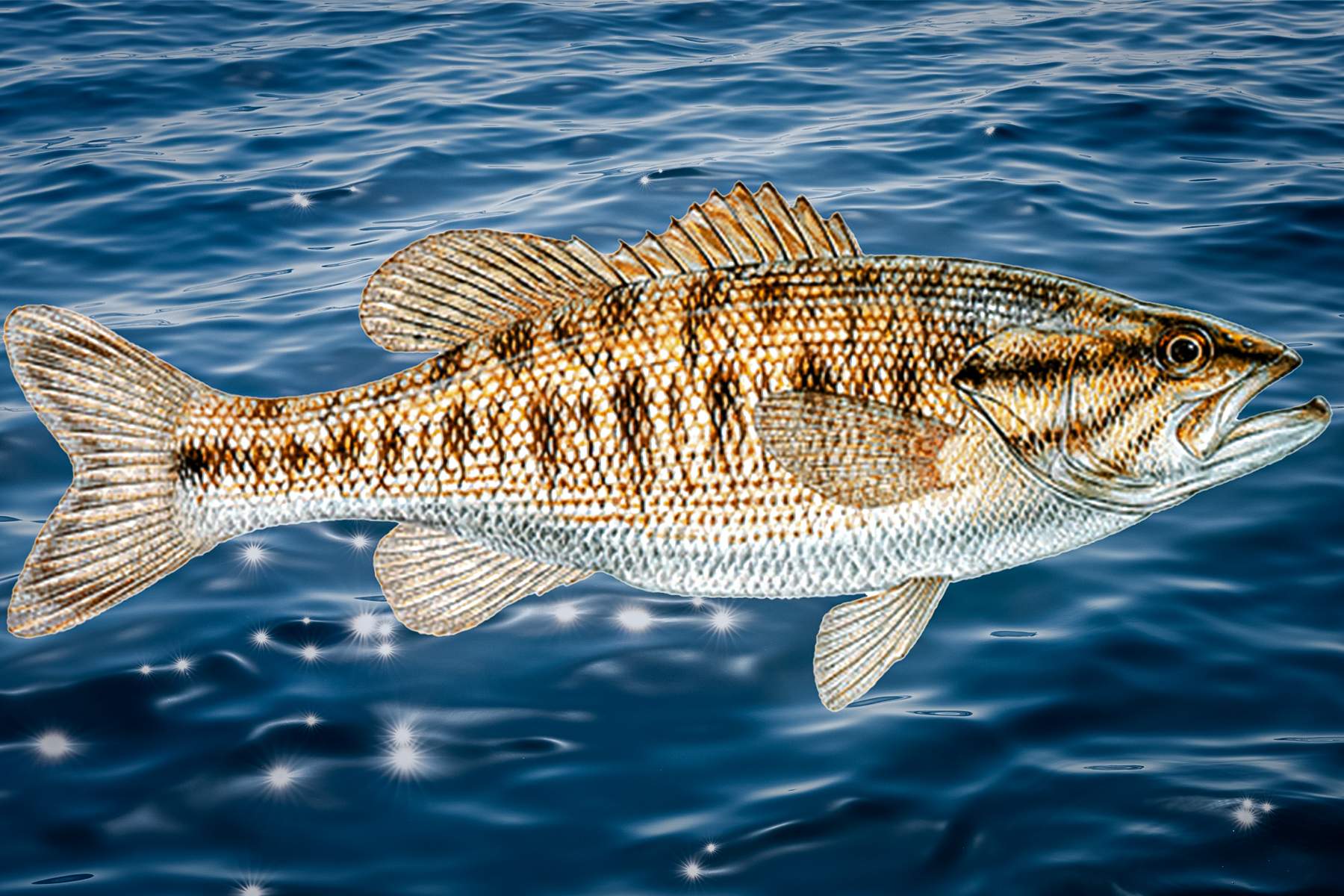
The Guadalupe bass is another local legend, found only in the Hill Country rivers of Texas. It’s the state fish, and for good reason. Built for current, often hiding in boulder-strewn runs, this fish puts up a fight against a fish twice its size.
Habitat Preference:
Guadalupe bass prefer clear, flowing water with rocky or gravel bottoms, moderate current, and plenty of submerged cover.
Feeding Behavior:
They are aggressive and opportunistic feeders, preying on insects, crayfish, minnows, and small fish. They often strike near eddies, riffles, undercut banks, and around submerged rocks or timber.
Seasonal Patterns:
Guadalupe bass spawn in spring when water temperatures reach around 60–70 degrees. They're active throughout much of the year, particularly in the warm months, moving between pools and riffles depending on temperature and flow.
World Record Guadalupe Bass:
The world record Guadalupe bass was caught by Dr. Bryan Townsend in 2014 on the Colorado River just south of Austin, Texas. It weighed in at 3 pounds, 11 ounces.
Florida Bass

Then there’s the Florida bass, often lumped in with largemouths but genetically distinct. They grow faster, hit harder, and commonly break double digits in the right waters. Stocked widely outside their native range, these fish have shaped the modern bass fishing scene in places like Texas and California, fueling the trophy bass scene that defines the South.
Habitat Preference:
Florida bass are native to the warm, weedy, slow-moving waters of Florida, especially lakes, swamps, and backwater rivers with abundant aquatic vegetation and cover like hydrilla, lily pads, and cypress knees.
Feeding Behavior:
They are ambush predators, feeding heavily on shad, bluegill, golden shiners, frogs, and even baby alligators. Florida bass tend to be more finicky than northern largemouth, especially in pressured waters.
Seasonal Patterns:
Spawning begins earlier than in most bass species, often starting in late winter (as early as January in south Florida) when water temps reach the low 60s. Post-spawn and fall can offer strong feeding windows.
Alabama Bass
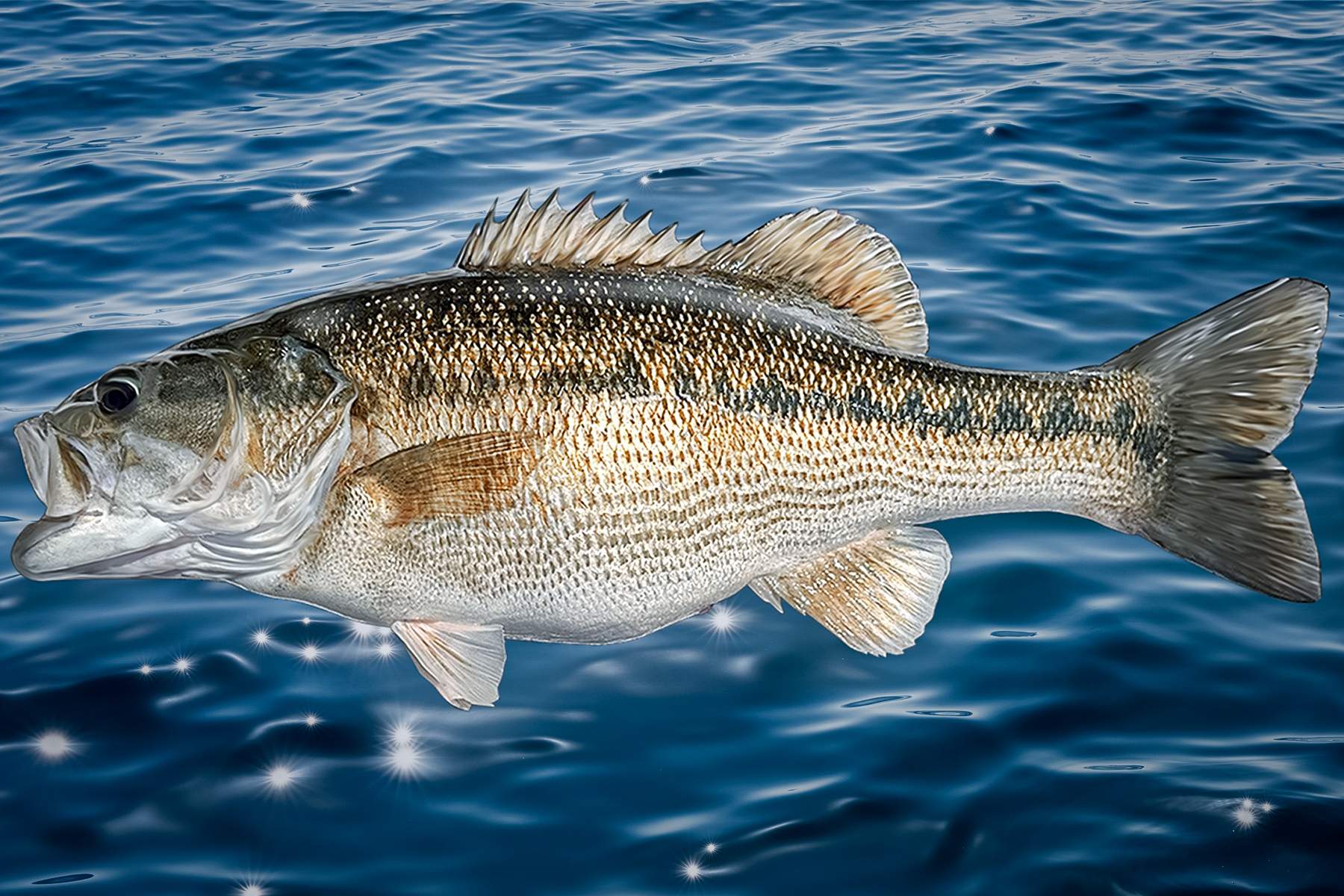
The Alabama bass is another fish that’s recently earned species status. Originally thought to be a variant of spotted bass, genetic research showed it’s unique in its own rights. Found in Alabama and Georgia lakes, it’s known for aggressive behavior and fast-growing bodies. This bass species has been known to pose a threat to native spotted bass populations when introduced to new waters.
Habitat Preference:
Alabama bass are native to the Mobile River Basin but have been widely introduced in reservoirs and rivers across the southeastern U.S. They prefer clear, deep reservoirs, rocky banks, points, and areas with strong structure and current.
Feeding Behavior:
They are aggressive, fast-feeding predators that often school and chase baitfish like shad and herring in open water. Alabama bass are highly competitive and frequently outcompete native bass species like largemouth and redeye bass.
Seasonal Patterns:
They spawn in spring when water temperatures reach around 60–70 degrees. In summer and fall, they often suspend over deep structure or school offshore chasing bait, particularly in large reservoirs.
Bartram’s Bass
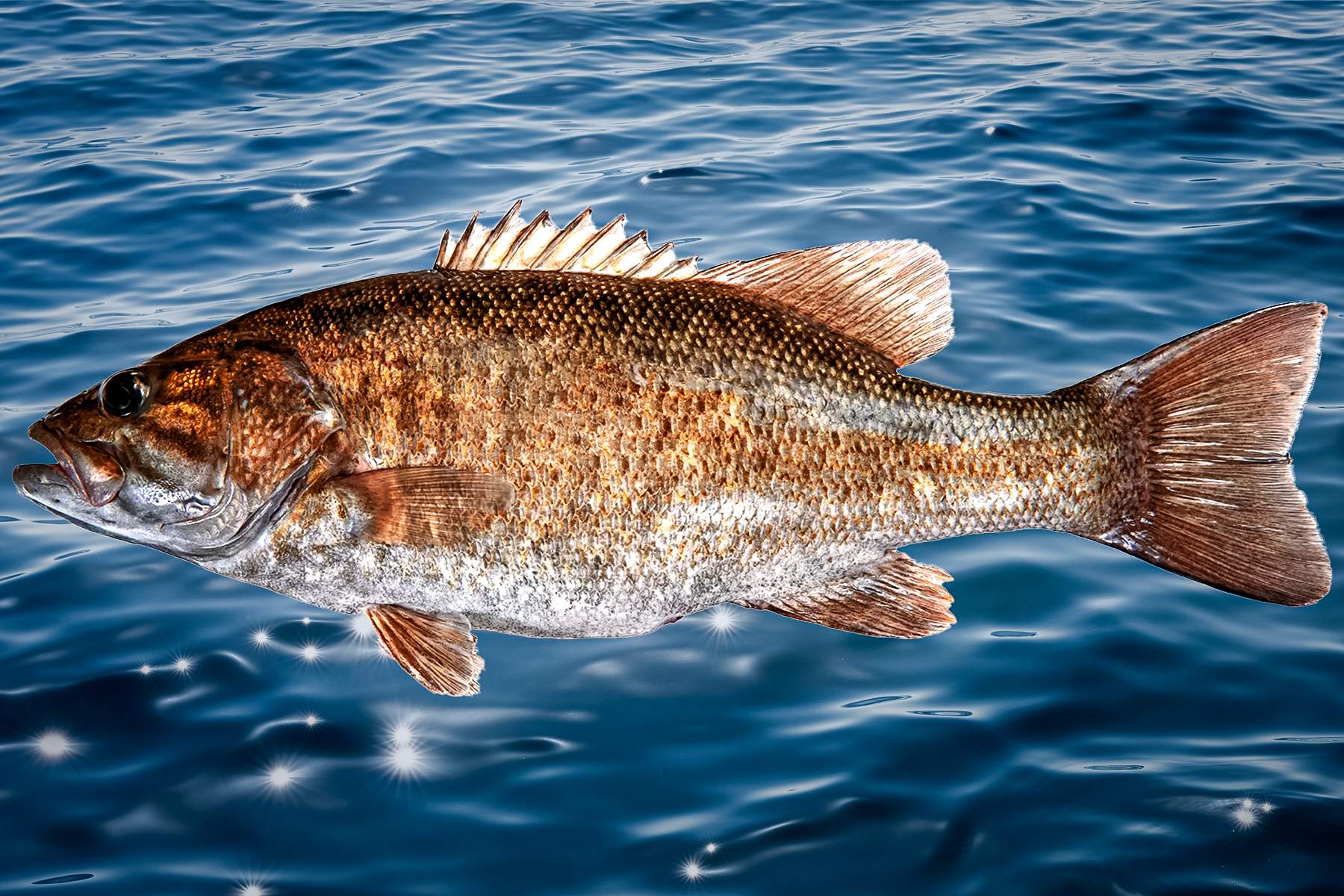
Closely related, Bartram’s bass is a redeye subspecies native to the Savannah River system. This bass is a beauty of a fish, yet elusive and rarely caught. Its markings are distinct, its behavior skittish, and it’s one of several species in the Southeastern black bass complex that are now under increased study and protection.
Habitat Preference:
Bartram's bass are native to the Savannah River Basin in Georgia and South Carolina. They thrive in clear, cool streams and rivers withrocky substrates, shoals, and moderate to swift current. They avoid deep, still waters and are closely tied to their native headwater environments.
Feeding Behavior:
These bass feed primarily on crayfish, aquatic insects, and small fish. They are ambush predators, often feeding in eddy currents, behind boulders, or near undercut banks where prey is funneled by the current.
Seasonal Patterns:
Bartram's bass spawn in spring, typically around April to May, when water temperatures reach the low to mid-60s. During warmer months, they remain active in riffles and runs, moving to deeper pools in cooler seasons.
Choctaw Bass
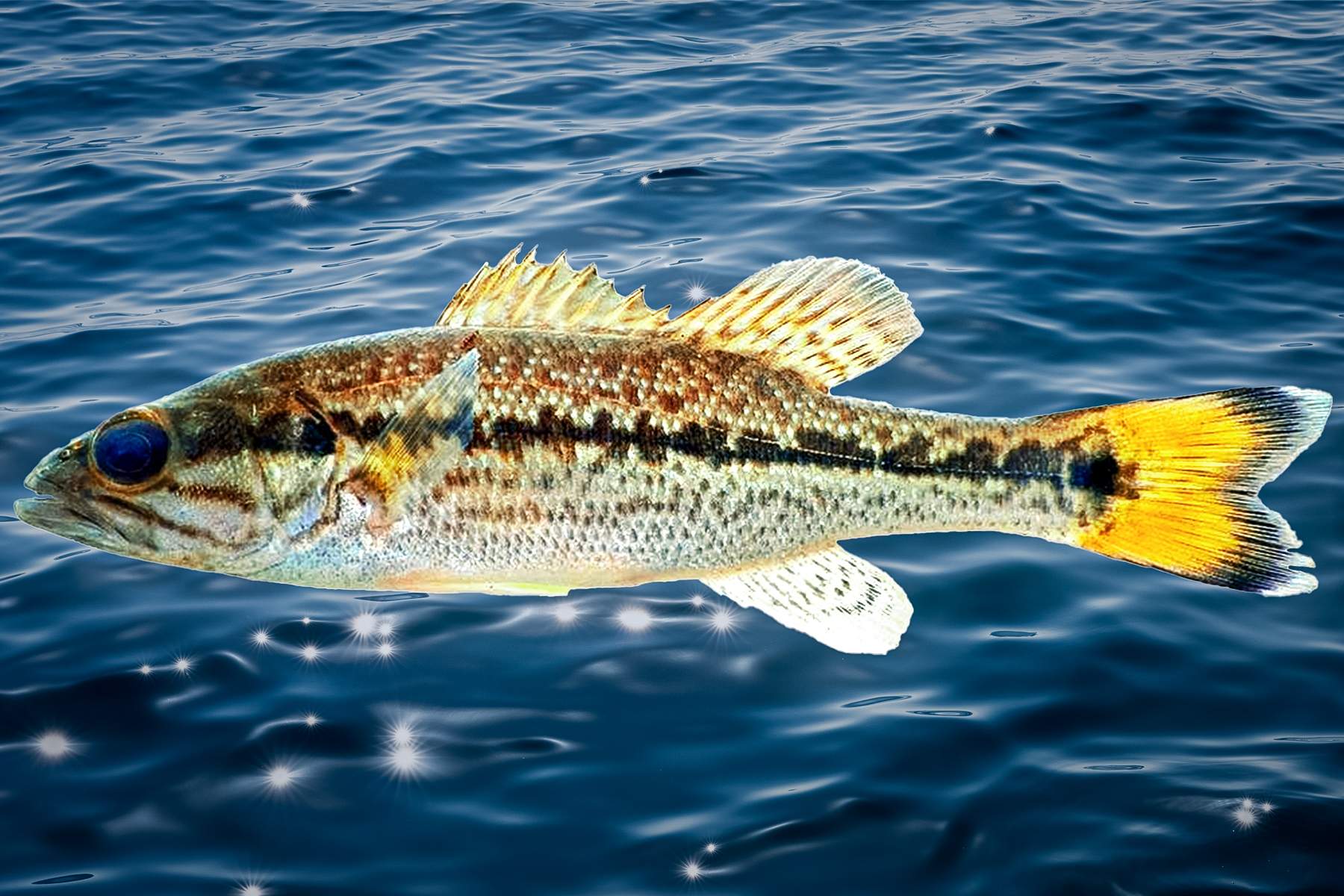
More mysterious still is the Choctaw bass, only described by scientists in the last decade or so. Found in streams across Alabama and the Florida panhandle, this bass is often mistaken for a spotted bass but carries unique DNA markers. Choctaw bass are highly sensitive to habitat changes and hybridization.
Habitat Preference:
Choctaw bass are native to the Upper Pearl River system in Mississippi and Louisiana. They favor clear, moderate to fast-flowing streams and riverswithrocky or sandy bottoms, riffles, and pools.
Feeding Behavior:
They feed on a variety of prey including crayfish, aquatic insects, and small fish, often ambushing prey near current breaks, rocks, and submerged logs.
Seasonal Patterns:
Choctaw bass spawn in spring, typically when water temperatures reach the mid-60s. During warmer months, they remain active in riffles and runs and often seek deeper pools during colder seasons.
White Bass

Outside of the black bass family, there’s a trio of open-water predators that deserve equal spotlight. The white bass is known for epic spring spawning runs, where they pile into rivers and creeks in staggering numbers. Fast, light-sensitive, and great on ultralight gear, they're fun to catch and a favorite for fish fries across the Midwest and South.
Habitat Preference:
White bass are typically found in freshwater rivers, reservoirs, and lakes across much of the U.S. They prefer open water near dams, river channels, and spawning grounds but also use shallow, gravelly areas during spawning.
Feeding Behavior:
They are schooling, aggressive feeders that primarily eat small baitfish such as shad and minnows, often chasing schools of prey near the surface or mid-depth.
Seasonal Patterns:
White bass spawn in spring, moving upstream into shallow, gravelly riffles and river mouths when water temperatures reach about 55–65 degrees. They feed heavily pre- and post-spawn, often forming large feeding schools.
Striped Bass
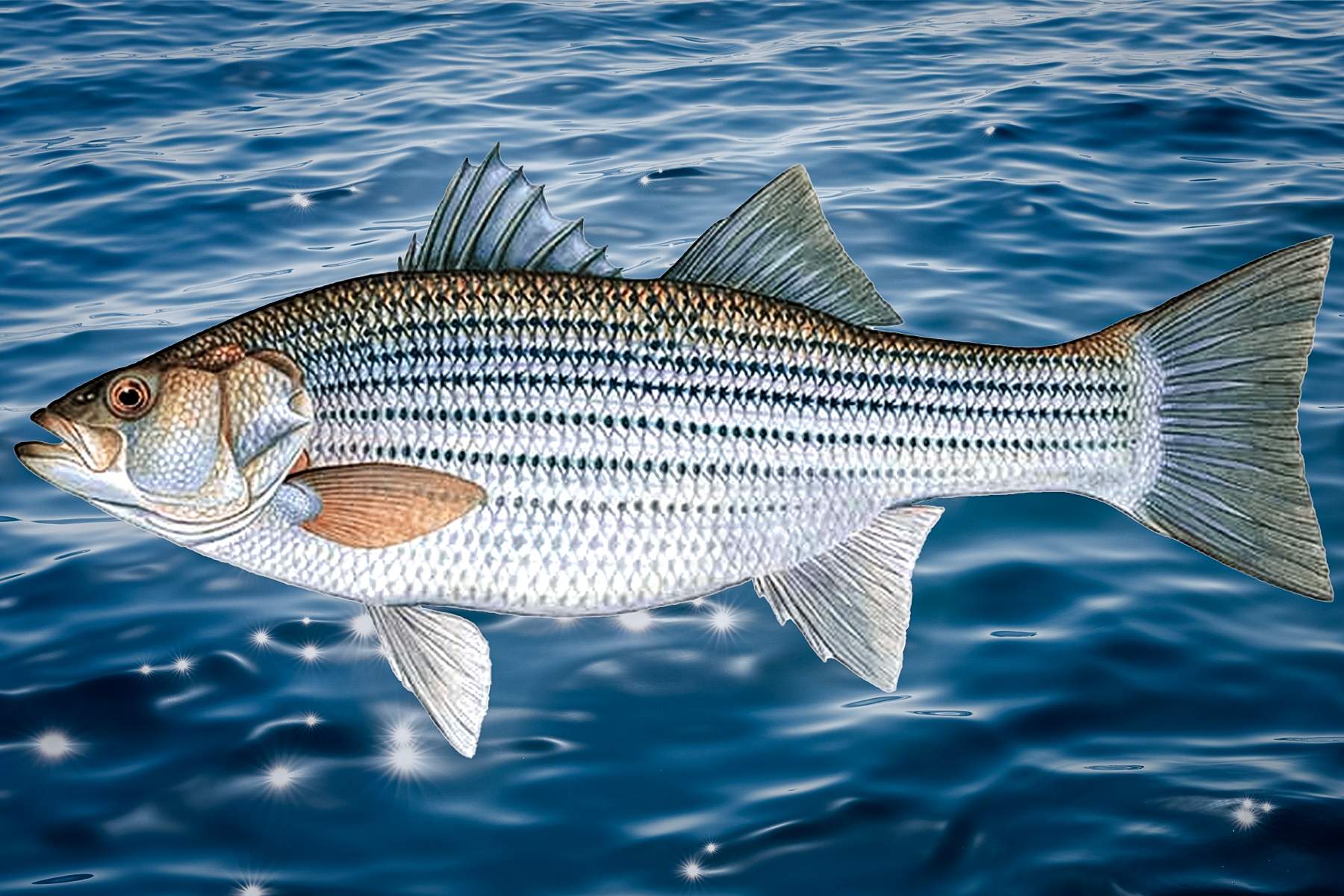
Their big cousin, the striped bass, is another favorite among anglers. Originally a saltwater bass species, stripers now thrive in freshwater lakes and rivers where they’ve been stocked. These fish grow huge, having been recorded weighing 40 pounds and up, and are prized for their tough fights and deep runs.
Habitat Preference:
Striped bass are anadromous, living in both coastal saltwater and freshwater rivers/lakes. They preferlarge rivers, reservoirs, estuaries, and coastal waters with moderate to strong currents and structure like points, drop-offs, and submerged ledges.
Feeding Behavior:
They are aggressive predators feeding on baitfish such as shad, herring, menhaden, and small saltwater fish. Striped bass often hunt by chasing schools of prey, frequently near the surface or mid-depth.
Seasonal Patterns:
Striped bass spawn in freshwater rivers during spring when water temperatures reach 55–68 degrees. Post-spawn, they migrate to estuaries or reservoirs, often following baitfish movements seasonally.
World Record Striped Bass:
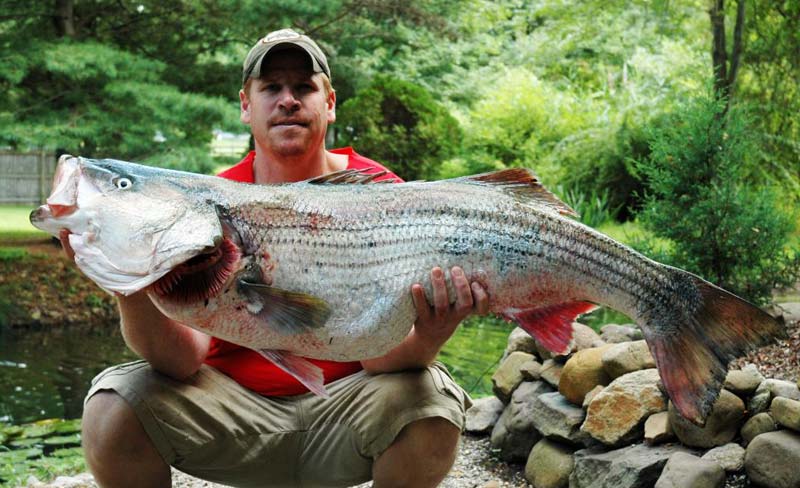
Greg Myerson caught the current world record striped bass on Aug. 4, 2011 on the Long Island Sound. The amazing fish weighed 81 pounds, 14 ounces.
Yellow Bass

Add in the yellow bass, a smaller, more vibrant member of the family, often found in the Mississippi River basin and its tributaries. Though they don’t get big, they’re quite an active and fast bass species, often schooling tightly and feeding aggressively when the water warms.
Habitat Preference:
Yellow bass are found primarily in large reservoirs, lakes, and rivers across the central and southern U.S. They prefer open water near points, drop-offs, and submerged structure, often schooling in mid-depths.
Feeding Behavior:
They feed mainly on small baitfish, insects, and crustaceans. Yellow bass are schooling feeders and often feed aggressively during low light periods like dawn and dusk.
Seasonal Patterns:
Yellow bass spawn in spring when water temperatures reach the mid-50s to low 60s°F, typically in shallow gravel areas. They remain active through summer and fall but tend to move deeper in colder months.
World Record Yellow Bass:
The current pending world record yellow bass was caught by Jason (Andy) Ault on April 15, 2023, on the Morse Reservoir in Indiana. It weight 4 pounds, 5 ounces.
Hybrid Striped Bass

Lastly, the hybrid striped bass, also known as a wiper or sunshine bass, is a cross between a white and striped bass. This sport fish combines the aggressive nature of a white bass with the power of a striper. It’s one of the best pound-for-pound fighters amongst freshwater fish, often creating surface boils in lakes that send birds and baitfish into a frenzy.
Habitat Preference:
Hybrid striped bass thrive in large reservoirs, lakes, and impoundments with cool, oxygen-rich water. They often school near drop-offs, points, submerged structures, and thermoclines.
Feeding Behavior:
They are aggressive predators feeding primarily on baitfish like shad, minnows, and threadfin herring. They actively chase prey both near the surface and at mid-depths, often schooling tightly.
Seasonal Patterns:
Hybrid striped bass spawn only in hatcheries (they don’t reproduce naturally). Anglers typically target them year-round, with spring and fall being especially productive when fish concentrate around baitfish.
From coast to coast, freshwater bass species offer something for every angler, whether it’s the power of a largemouth, the fight of a smallmouth, or the rarity of a Guadalupe. Understanding these fish isn’t just useful on the water, it helps support conservation efforts and keeps local fisheries strong. The next time you hook into a bass, take a closer look. It might be more unique than you think.
